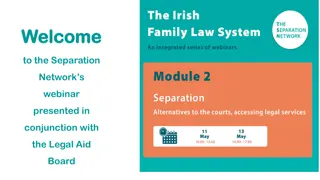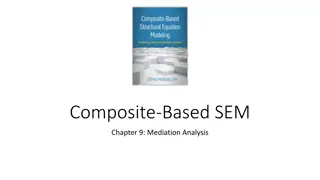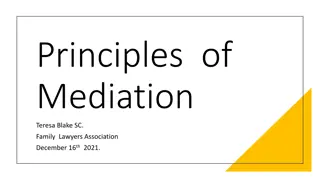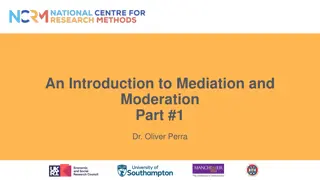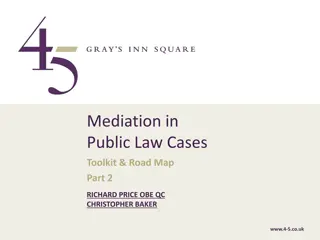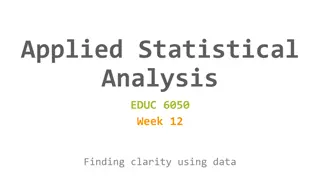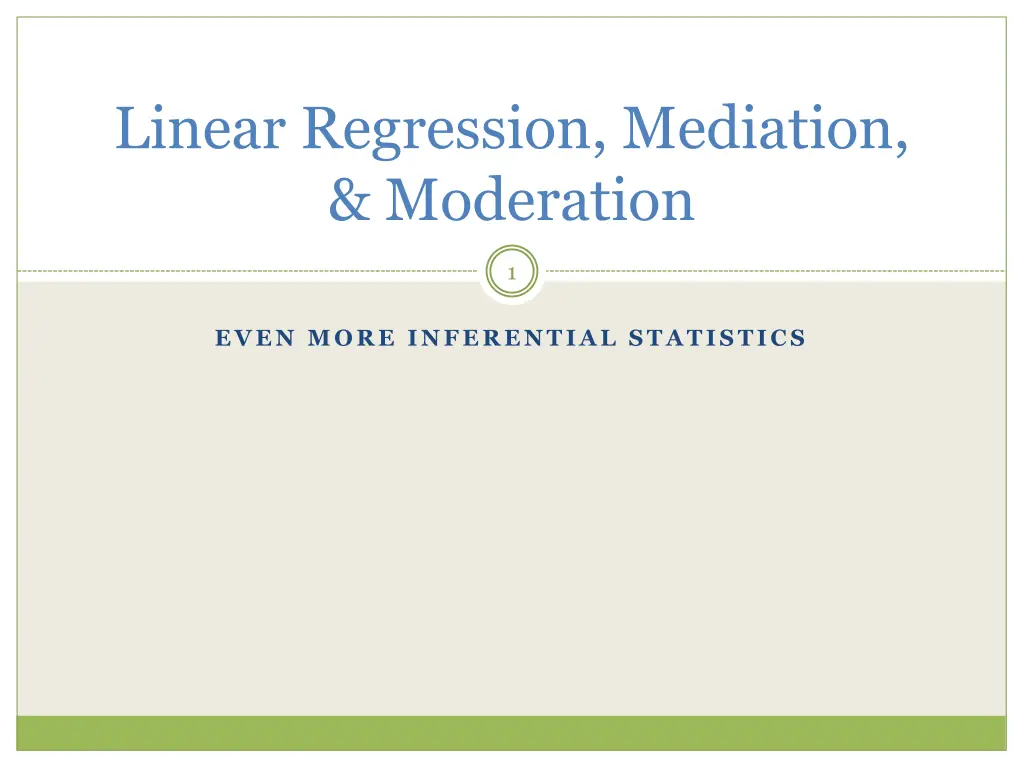
Understanding Inferential Statistics: Regression, Mediation, and Moderation
Dive into the world of inferential statistics with a focus on regression, mediation, and moderation. Explore concepts like regression weights, mediation processes, and moderating variables. Learn how to analyze relationships between variables, understand reading results, and utilize helpful resources for statistical analysis.
Download Presentation

Please find below an Image/Link to download the presentation.
The content on the website is provided AS IS for your information and personal use only. It may not be sold, licensed, or shared on other websites without obtaining consent from the author. If you encounter any issues during the download, it is possible that the publisher has removed the file from their server.
You are allowed to download the files provided on this website for personal or commercial use, subject to the condition that they are used lawfully. All files are the property of their respective owners.
The content on the website is provided AS IS for your information and personal use only. It may not be sold, licensed, or shared on other websites without obtaining consent from the author.
E N D
Presentation Transcript
Linear Regression, Mediation, & Moderation 1 EVEN MORE INFERENTIAL STATISTICS
Overview 2 By the end of this unit you should be familiar with: Regression weights Mediation Moderation
Regression 3 Simple Linear What s the relationship between one IV and one DV? As the name implies, assumes a linear relationship between variables. The DV has to be continuous. The IV could be dichotomous or continuous Examples: DV: how warm do you feel towards Democrats from 1 to 10? IV: Are you a Republican or not? IV: How warm do you feel towards Republicans from 1 to 10? Beta, R2 Multiple Linear What s the relationship between 2+ IVs and one DV? Logistic DV is categorical, so a log transform must be utilized Example: Are you Democrat, Republican, Green, Working Families, independent, unregistered?
When reading articles, the authors may explain their models like this: 4
Reading Results: Regression 5 Constant is the mean, or the mean when values of other variables are at their mean (or 0 if they are factors). Each predictor variable will have an estimated weight, known as B or . There is a t-test for each that tests whether it differs reliably from 0. can be positive or negative. close to zero means there is no relation between X and Y. R2 indicates how much variance in the outcome variable was accounted for by the whole set of predictor variables.
Other Helpful Resources 6 These resources are easy to navigate and explain both simple and complex statistical concepts well. They may not use examples relevant to this course, but if you re having trouble deciphering results or want to know more about experimental/analytical methods check these out! UCLA stats help page (http://www.ats.ucla.edu/stat/) Wolfram Alpha (https://www.wolframalpha.com/examples/Statistics.html) Texas A&M Stats (http://bobhall.tamu.edu/FiniteMath/Module8/Introduction.html) Laerd Stats (https://statistics.laerd.com/spss-tutorials/independent-t-test-using-spss-statistics.php) *click around to navigate to another test there was not a homepage to link to*
Mediation: Checking a set of regressions 7 Mediation One variable explains the relationship between two other variables E.g., Stress Rumination Depression To test this, you have to measure all 3 variables in the same people. It could be a correlational design, or an experimental design with two measured variables. (I made up this example; not real data).
Mediation with a non-expt 8 Correlational design Stress predicts Rumination 2. Rumination predictions Depression 3. Stress predicts Depression 4. Stress and Rumination predict Depression 1. Measure self-reported levels of stress, self- reported rumination, and depression symptoms. Conduct 3 regressions on the data. Mediation is demonstrated if the B for Stress is smaller in Eqn 4 than Eqn 3, but the weights for Eqn 1 and 2 are non-zero.
Mediation in an Experiment 9 Manipulate Stress as the IV (say, low, high) Measure rumination after Measure depression after. Tests with 4 regression equations again. Rumination (Mediator) 1 Stress Condition (IV) Depression (DV)
Mediation vs. Moderation 10 Mediation One variable explains the relationship between two other variables E.g., Stress Rumination Depression Moderated Mediation In moderation, one variable affects the strength of the relationship between two other variables Suppose the results look like this: Stress Rumination Depression for women Stress does not make for more rumination for men. Gender moderates the strength relationship between rumination and depression, so it s the moderator of the mediation (Stress Rumination Depression)



